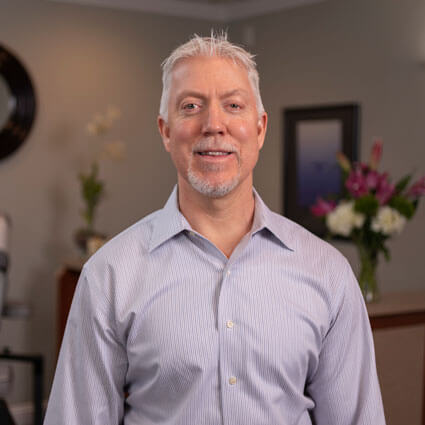Shockwave Therapy North Hampton, NH: Find The Best Clinics
Looking for Shockwave Therapy in North Hampton? Just Healthy lists all the top-rated clinics in one place to help you find relief fast and easy.
Frequently asked Questions
What is shockwave therapy?
Shockwave therapy is a non-invasive medical treatment that uses high-energy sound waves to stimulate healing in injured tissues. It's commonly used for conditions like plantar fasciitis, tendinitis, and erectile dysfunction. The sound waves increase blood flow and promote the regeneration of damaged tissue, helping to reduce pain and improve function. This therapy is a popular option because it avoids surgery and has a quick recovery time.
What conditions can shockwave therapy treat?
Shockwave therapy can treat a variety of conditions, particularly those related to chronic pain and musculoskeletal issues. Common conditions include plantar fasciitis, tendinitis, tennis elbow, shoulder pain, and Achilles tendinopathy. It’s also used for calcific shoulder tendinitis, shin splints, and certain types of soft tissue injuries. Recently, shockwave therapy has been found effective for treating erectile dysfunction and enhancing healing in some bone fractures. By targeting specific problem areas, it helps reduce pain and promote healing.
What is the recovery time after shockwave therapy?
The recovery time after shockwave therapy is typically short. Most patients can return to their normal activities immediately following the treatment. Some might experience mild soreness or swelling in the treated area, which usually subsides within a few days. It's advisable to avoid strenuous activities or heavy exercise for 48 hours after each session to allow the body to heal properly. Your provider will give you specific aftercare instructions to ensure the best possible outcome and minimize any potential discomfort.
Are there any risks associated with shockwave therapy?
Shockwave therapy is generally safe, but like any medical treatment, it carries some risks. Common side effects include mild pain, redness, swelling, or bruising at the treatment site. These are usually temporary and resolve within a few days. In rare cases, patients might experience more significant pain or skin damage. It's important to have the procedure done by a qualified professional to minimize risks. Discussing your medical history and any concerns with your provider can help ensure the treatment is appropriate for you.
What is the difference between radial and focused shockwave therapy?
Radial and focused shockwave therapy are two types of shockwave treatments that differ in their application and depth of penetration. Radial shockwave therapy disperses energy over a larger area and is typically used for superficial conditions, such as tendinitis or muscle pain. It’s effective for treating broader tissue damage. Focused shockwave therapy, on the other hand, delivers energy at a specific, deeper point, making it suitable for targeting precise areas like deep-seated tendon or bone injuries. Both types are effective, but the choice depends on the specific condition and treatment goals.
Can shockwave therapy be used for tendinitis?
Yes, shockwave therapy is commonly used to treat tendinitis. The high-energy sound waves stimulate blood flow and promote healing in the affected tendons, helping to reduce inflammation and pain. Conditions like Achilles tendinitis, patellar tendinitis (jumper's knee), and tennis elbow often respond well to this treatment. Patients typically see improvement after a few sessions, with reduced pain and increased mobility. Shockwave therapy offers a non-invasive alternative to surgery or long-term medication use for managing tendinitis.
How many sessions of shockwave therapy are needed?
The number of shockwave therapy sessions needed varies depending on the condition being treated and the individual’s response to therapy. Typically, patients undergo between 3 to 5 sessions, spaced about one week apart. Some conditions might require more sessions, while others might see significant improvement with fewer treatments. Your healthcare provider will assess your specific situation and create a tailored treatment plan to achieve the best results.
Does insurance cover shockwave therapy?
Insurance coverage for shockwave therapy varies widely. Some insurance plans may cover the treatment, especially if it's deemed medically necessary and prescribed by a healthcare professional. However, other plans might consider it an elective or experimental procedure and not provide coverage. It's important to check with your insurance provider to understand your specific coverage and any out-of-pocket costs you may incur. Your clinic may also offer payment plans or packages to help manage the cost of treatment.
Shockwave therapy for kidney stones?
Shockwave therapy, specifically known as Extracorporeal Shock Wave Lithotripsy (ESWL), is a common treatment for kidney stones. The therapy uses high-energy shock waves to break kidney stones into smaller pieces, making them easier to pass through the urinary tract. ESWL is a non-invasive procedure and is effective for most patients, reducing the need for surgery. The treatment is usually performed on an outpatient basis and recovery time is typically short.
Shockwave Therapy North Hampton Success Stories
Shockwave therapy has been fantastic for my plantar fasciitis. After several sessions, the pain in my feet has significantly decreased, and I'm able to walk and run without discomfort. It's been a game-changer for my daily life. Highly recommend!
Emily Johnson, 30
I tried shockwave therapy for my tennis elbow, and the results have been incredible. The pain and inflammation have reduced, and I can play tennis again without any issues. The treatment was quick and effective. Definitely worth trying if you have chronic pain.
Robert Thompson, 42
Shockwave therapy helped me recover from a long-standing shoulder injury. The improvement in mobility and reduction in pain were noticeable after a few sessions. The treatment is non-invasive and really works. I highly recommend it for anyone dealing with persistent pain or injuries.
Linda Martinez, 47


